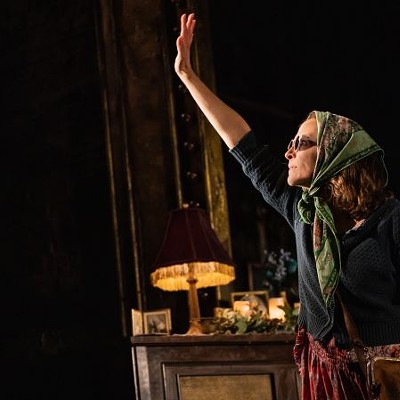The Starlite Drive-In Theater lies abandoned just off of Highway 290 in Brenham, looking like a dead monument to a time long gone. Anyone taking that route between Houston and Austin will have seen the back of its single screen and a tall metal fence around the perimeter.
Scattered around America, there are many old drive-ins. Most are lifeless husks, either abandoned and slowly being claimed by the elements, or having been repurposed into something entirely different. In other cases, they're simply gone, demolished so the land they sat on could be redeveloped into something more profitable.
Those that have disappeared entirely are relegated to the memories of locals who can still remember going to see movies there, but as time goes on fewer people are around who went to movies when they were open for business. There's a definite ghostlike quality to those old, boarded up drive-in theaters. It seems that most of the ones still standing are usually scattered on the outskirts of small towns where land is plentiful, and not in high demand. There's no rush to buy the theaters, and in those cases they simply stand vacant, as a reminder of a long gone era of American entertainment.
The first drive-in theater opened in 1933 in Camden, New Jersey. Originally known as a Park-In Theater, it was the brainchild of Richard Hollingshead, who was inspired by his mother's inability to get comfortable in traditional movie theater seats. Hollingshead worked for his father's auto products company and decided that people would enjoy watching films in their own cars. So after experimenting with the primitive movie technology available at the time, he opened his first Park-In to great success. In Texas, the Corpus Christi Drive-In opened in the spring of 1939, being the first theater to bring the drive-in phenomenon to the Lone Star State.
In 1949 Hollingshead's patent was overturned, and drive-in theaters began springing up all over the country, fueled by America's post World War II love affair with the automobile. The post-war Baby Boom also drove people into the drive-ins, many of which began promoting playgrounds for young children.. Drive-ins reached their peak in popularity between the late 1950s and mid '60s, with more than 5,000 theaters open across the country during that time period.
Although all drive-ins were big by necessity, since the "seating area" was essentially a large parking lot made to accommodate a few hundred cars, Copiague, New York's All-Weather Drive-In was a true Goliath at the time, featuring parking for 2,500 cars as well as an air conditioned indoor area that seated an additional 1,200 seats, with amenities like a playground and a full service restaurant. While the exception, there were several other drive-ins of the period that were able to serve more than 2,000 cars at a time, including Lufkin's Panther Drive-In which could take in as many as 3,000 vehicles, one of the largest in the country.
This story continues on the next page.





